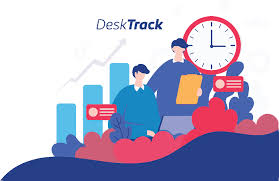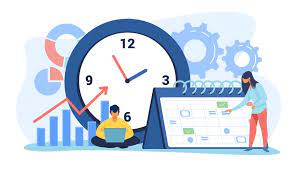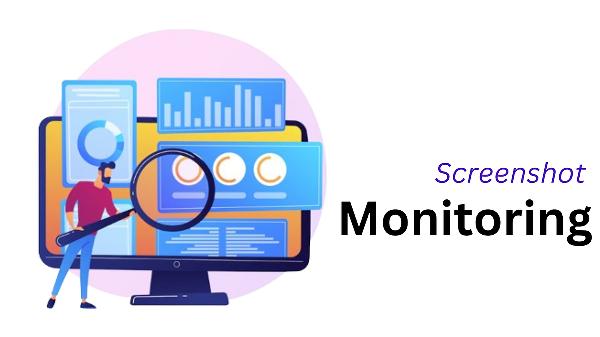The Comprehensive Guide to Remote Work Monitoring Software

Strong8k brings an ultra-HD IPTV experience to your living room and your pocket.
With the rapid shift to remote work, businesses worldwide have faced challenges in maintaining productivity, ensuring data security, and managing employee performance. Remote work monitoring software has emerged as a vital solution to address these challenges, offering tools that allow employers to track, analyze, and optimize the performance of their remote workforce. This guide explores the features, benefits, and considerations when choosing remote work monitoring software.
Features of Remote Work Monitoring Software
Real-Time Activity Tracking: These tools provide insights into employee activities, including the applications used, websites visited, and time spent on various tasks. This feature helps ensure that employees stay focused on their work, even when they're not in a traditional office environment.
Automated Time Tracking: Automated time tracking eliminates the need for manual entry, making it easier to log hours accurately. This is particularly beneficial for teams working across different time zones, ensuring fair billing and payroll processing.
Screenshot Monitoring: Periodic screenshots give managers a visual overview of employees' work, helping to verify productivity without being overly intrusive. This feature is essential for ensuring transparency and accountability in remote teams.
Project Management Integration: Many remote work monitoring tools integrate with project management software, allowing seamless tracking of task progress and time allocation. This integration fosters collaboration and helps keep projects on schedule.
Data Security and Compliance: Remote work monitoring software often includes security features such as data encryption, access control, and compliance tracking. These tools help protect sensitive information and ensure that remote work adheres to industry standards and regulations.
Benefits of Remote Work Monitoring Software
Enhanced Productivity: By providing visibility into remote work activities, these tools help identify productivity bottlenecks and areas for improvement. Managers can use this data to offer targeted support and optimize workflows.
Improved Accountability: Monitoring software fosters a culture of accountability by tracking employee performance and ensuring that tasks are completed on time. This is especially important in a remote setting where direct supervision is limited.
Better Work-Life Balance: Automated tracking of work hours helps prevent burnout by ensuring that employees do not overwork. This balance is crucial for maintaining employee morale and long-term productivity.
Cost-Effective Management: Remote work monitoring software reduces the need for extensive managerial oversight, allowing businesses to manage their remote teams more efficiently and cost-effectively.
Data-Driven Decision Making: The analytics provided by these tools enable managers to make informed decisions based on real-time data. Whether it's reallocating resources or adjusting project timelines, data-driven insights lead to better outcomes.
Considerations When Choosing Remote Work Monitoring Software
Privacy Concerns: It’s important to strike a balance between monitoring and respecting employee privacy. Choose software that offers customizable settings, allowing employees to control what data is shared during work hours.
Ease of Use: The software should be user-friendly, with an intuitive interface that doesn’t require extensive training. This ensures quick adoption by your team and minimizes disruptions.
Scalability: As your business grows, your monitoring software should be able to scale with it. Look for solutions that can handle an increasing number of users and offer advanced features as your needs evolve.
Customer Support: Reliable customer support is essential, especially if you encounter issues during implementation. Choose a provider known for responsive and helpful customer service.
Cost: Evaluate the software’s pricing model to ensure it fits within your budget. Consider the long-term value it offers in terms of productivity gains and cost savings.
Conclusion
Remote work monitoring software is a powerful tool for managing a distributed workforce. By providing insights into employee activities, ensuring data security, and enhancing productivity, these tools help businesses navigate the challenges of remote work effectively. When choosing the right software, consider your company’s specific needs, privacy concerns, and budget to find a solution that will support your remote work strategy for the long term.
Popular Remote Work Monitoring Tools
DeskTrack: Known for its comprehensive monitoring features, including application tracking, URL tracking, and screenshot capturing, DeskTrack is a top choice for businesses looking to manage remote teams effectively.
Time Doctor: This tool offers detailed time tracking, distraction management, and project tracking features, making it ideal for teams that need to stay focused on productivity.
Hubstaff: Hubstaff provides real-time tracking, automated timesheets, and GPS tracking, making it a versatile solution for both remote and field-based teams.
By implementing the right remote work monitoring software, businesses can ensure that their remote teams remain productive, secure, and aligned with organizational goals, no matter where they are located.
Note: IndiBlogHub features both user-submitted and editorial content. We do not verify third-party contributions. Read our Disclaimer and Privacy Policyfor details.







